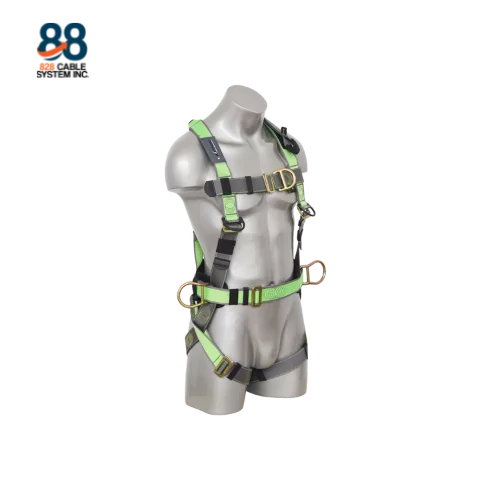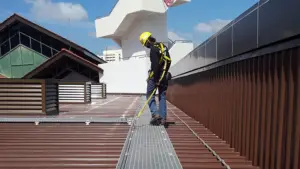
Exploring Innovative Building Maintenance Unit Solutions and Their Benefits for the Philippine Real Estate Industry
In the fast-paced world of modern architecture, ensuring the safety

In industries where working at heights is commonplace, ensuring the safety of workers is paramount. Full-body harnesses are crucial tools designed to protect workers from fall-related injuries by providing secure suspension and impact absorption. This guide explores everything you need to know about full-body harnesses, from their design and safety standards to proper usage and maintenance practices.
A full-body harness is a safety device designed to keep a worker suspended in an upright position after a fall. Unlike older body belts, which were found to contribute to internal injuries, harnesses distribute the impact of a fall over a wide area of the body, reducing the risk of injury significantly. Key components include straps, D-rings for attachment points, buckles for adjustment, and padding for comfort and support.
The use of full-body harnesses is governed by stringent safety standards and regulations, such as those set by OSHA (Occupational Safety and Health Administration). These regulations mandate the use of fall arrest devices that limit free falls to no more than 6 feet and provide for a deceleration distance of 3.5 feet. Harnesses must also have a maximum arresting force of 1,800 pounds and a load capacity at least double the force needed to arrest a fall from 6 feet.
Selecting the appropriate full-body harness is crucial for ensuring worker safety and comfort. Factors to consider include the type of work being performed (e.g., construction, maintenance, rescue operations), ergonomic design features, adjustability for different body sizes, and compatibility with other safety equipment such as lanyards and lifelines.
Proper usage of a full-body harness begins with correct fitting and adjustment. Workers should be trained to wear the harness snugly but comfortably, ensuring all straps are properly secured and excess slack is minimized. Correct positioning of attachment points (front and back D-rings) is essential for effective fall arrest and prevention of suspension trauma. Regular inspections before each use are critical to identify any signs of wear, damage, or defects that could compromise safety.
Routine maintenance and inspection of full-body harness are essential to prolong their lifespan and ensure they function correctly. A comprehensive inspection checklist should include checking for frayed or worn straps, damaged stitching, deformation of hardware, and signs of chemical or UV damage. Harnesses involved in fall incidents must be inspected by a competent person before being returned to service, as they may have sustained damage that is not immediately visible.
Full-body harnesses are indispensable tools for protecting workers at height, providing both safety and peace of mind. By understanding their design, adhering to safety regulations, and implementing proper maintenance practices, employers can create a safer work environment and reduce the risk of fall-related injuries. Investing in quality harnesses and ensuring regular training and inspection are key steps towards maintaining workplace safety standards.

In the fast-paced world of modern architecture, ensuring the safety

Worker safety is a top priority in industries where fall

Imagine soaring through the lush forests and picturesque landscapes of

When working at heights, safety is a top priority. In

In the dynamic landscape of the Philippines, where weather conditions

Worker safety at elevated heights is a priority for industries
Copyright © 828 Cable System Inc. Philippines 2023 All Right Reserved